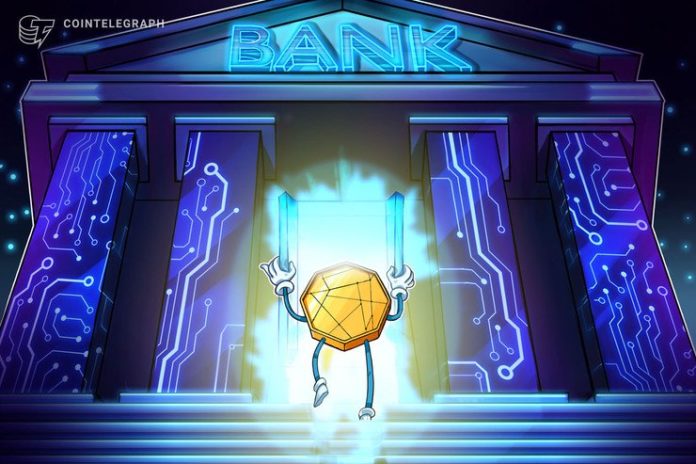[ad_1]
Mass adoption. It’s a mantra touted often in this space and what every crypto company is working toward. While tremendous progress has been made in the past 10 years on driving crypto awareness and improving user experience, we still aren’t there yet in terms of mass utilization. In order for real adoption to occur, the crypto ecosystem needs to seamlessly interact with the existing financial system.
Think back to the very first time you bought Bitcoin (BTC). It’s scary.
- You take your “real” money and put it into the computer to get back magic internet money.
- You need to move your newly purchased Bitcoin to a cold wallet for safe storage.
- You enter the destination wallet address, but have to triple-check it to make sure there are no errors.
- Once you finally click send, you don’t know if you’ve done it correctly because it takes time for the confirmations to occur (sometimes hours). Plus, if you lose your private key or seed of the destination wallet — your funds are gone forever.
All of us are early adopters in the crypto space and have navigated these waters, but the majority of people in the world won’t have that same experience. People want instant gratification and they want things to be simple. Unlike the internet, where people eventually learned how to send emails over the course of a decade, there is a real financial cost to making mistakes when learning how to use crypto. If I accidentally make a typo in an email address or put the wrong recipient, I can easily fix my mistake by resending the email to the right person. That’s not possible with cryptocurrency.
In order to drive mass adoption of cryptocurrency, companies need to give consumers all of the benefits of blockchain technology while having it seamlessly interact with the existing financial system they already understand. A cryptocurrency debit card, for instance. People worldwide already understand how debit cards work, plus Visa and Mastercard have spent decades getting their cards accepted at tens of millions of merchants around the world. The cardholder has the ability to easily spend cryptocurrency, while the merchant is receiving dollars as usual.
For example, someone who mines Bitcoin or trades altcoins may want to take their earnings to pay for everyday living expenses. That user then converts those crypto assets to United States dollars on an exchange, withdrawing from the exchange to their bank account, and then waiting a few days for those dollars to clear. All just to be able to spend on their bank-issued debit or credit card. A crypto debit card makes that process much easier and faster. Instead, that person can send crypto assets from their mining rig or exchange wallet, and those funds are almost immediately available to use wherever Visa or Mastercard is accepted. It’s the same outcome for the user, with less fees and more convenience.
Some will argue that merchants should accept cryptocurrency organically, rather than U.S. dollars. However, there are problems with this. First, many cryptocurrencies can be slow if the blockchain is congested, making it an inconsistent payment experience at the point of sale. While there are other crypto assets like Cardano (ADA), Nano (NANO), Ternio (TERN) or Litecoin (LTC) that have faster confirmations — it’s still possible they can take longer than a few seconds. When there is a long line at the grocery store or you’re running to catch a subway, you don’t want to wait to see if your payment has cleared.
Second, a grocery store can’t pay their employees in Bitcoin or buy goods from suppliers in BTC. The grocery store would need to make the conversion to U.S. dollars on their own for day-to-day operations. The volatility we’re all familiar with bears significant risk, and speculating on currency value is not something you want to do when running a business. Finally, there are no protections for the user if they pay the merchant for goods or services and the merchant does not deliver.
The same goes for bank accounts. Most people today get their pay direct-deposited into a checking account insured by the U.S. Federal Deposit Insurance Corporation. Your bank account is already linked to your employer, bill pay and multiple other sources — so switching banks is not something people do often. However, using services like automated clearing house or wire transfer takes too long and can be expensive. A stablecoin is much easier for instantaneous cross-border remittance. Blending the two is a powerful combination. The user avoids expensive fees or spread on forex conversions while still getting the convenience of blockchain’s benefits.
For example, a Chinese national could be studying at a university in the United States, but their family remains in China. That student may have a last-minute expense for books, rent or tuition. A family member in China can instantly convert a local currency to a crypto asset and send it directly to the student’s bank account within minutes at minimal fees — or even better, directly to the student’s crypto debit card for instant spending.
Wires typically take several days, cost roughly $45, and also calculate an approximate 10% conversion fee. Using blockchain will significantly reduce both time and costs, and when paired appropriately with bank accounts, still gives the student and their family the convenience of using the tools they are familiar with.
Ultimately, a hybrid setup of decentralized crypto assets paired with centralized custodians is going to be what brings in the masses. ACH, Wire, Visa and Mastercard will be the on and off ramp for consumers, while blockchain will enable the secure transfer of value that makes other systems antiquated. Companies need to enable consumers to get the benefits of new technology without a steep learning curve or drastically changing the user’s habits. People don’t care how technology works. They want instant gratification and as long as you are giving them technology that saves them money, time and makes their lives easier, they will gravitate to it.
The views, thoughts and opinions expressed here are the author’s alone and do not necessarily reflect or represent the views and opinions of Cointelegraph.
Ian Kane is the co-founder and COO of Ternio, which provides white-label products that enable cryptocurrencies to interact with the existing financial system. Ternio’s BlockCard gives people the best way to use cryptocurrency for everyday purchases. Prior to Ternio, Ian worked in technology and digital media for over 10 years with a heavy focus on business development, sales and strategy.
[ad_2]










